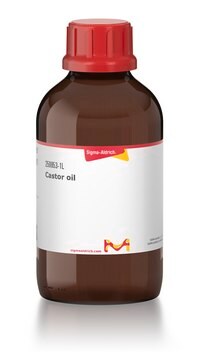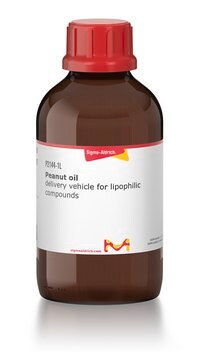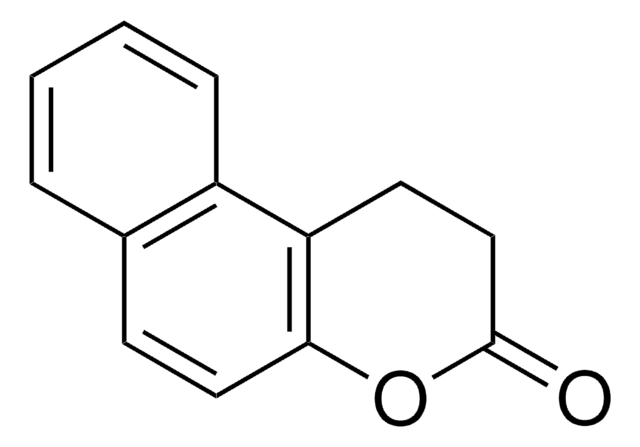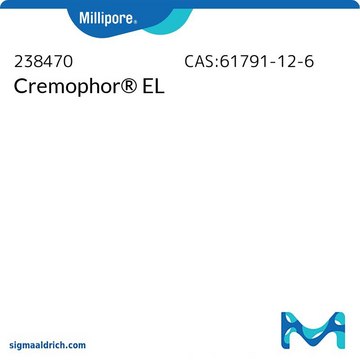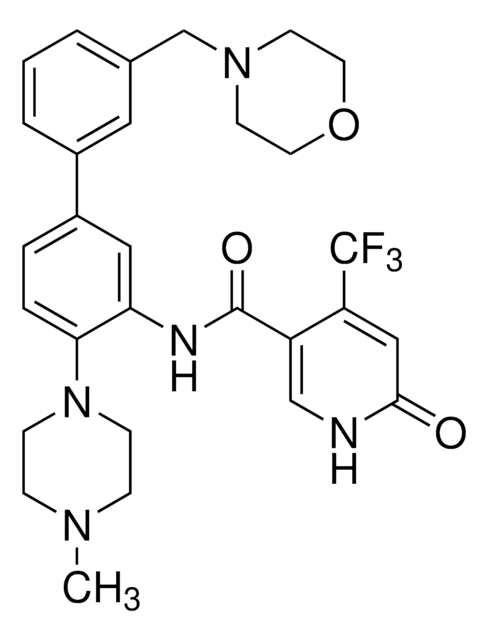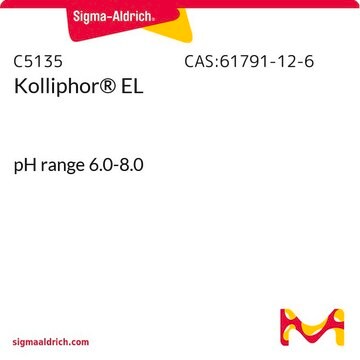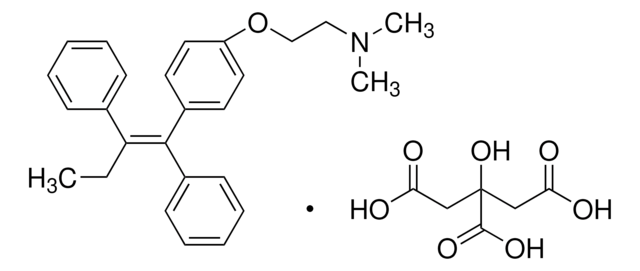S5007
Sunflower seed oil
from Helianthus annuus, liquid, emollient
Faça loginpara ver os preços organizacionais e de contrato
About This Item
Produtos recomendados
Nome do produto
Sunflower seed oil from Helianthus annuus,
densidade
0.92 g/mL at 25 °C (lit.)
Procurando produtos similares? Visita Guia de comparação de produtos
Descrição geral
Sunflower seed oil from Helianthus annuus contains saturated fatty acids (palmitic and stearic acids), monounsaturated fatty acid (oleic acid), and polyunsaturated acid (mostly linoleic acid). In addition, this edible oil also contains nonglyceridic contents including tocopherols and plant sterols, and is rich in vitamins and minerals.
Aplicação
Sunflower seed oil from Helianthus annuus was used as a vehicle to administer tamoxifen and 4-hydroxytamoxifen to mice.
Ações bioquímicas/fisiológicas
Sunflower seed oil is one of the most used vegetable oils in human nutrition. Oilseed crop sunflower (Helianthus annuus) is also used for biodiesel production. Sunflower oil is used as an emollient in cosmetics, and it serves as an effective phenolic antioxidant. Phytosterols in sunflower oil help in regulating the cholesterol levels in the body. Therefore, sunflower oil may be used to treat pathological conditions such as like acne, arthritis, and hair damage.
Perigos de suplementos
Código de classe de armazenamento
10 - Combustible liquids
Classe de risco de água (WGK)
WGK 3
Ponto de fulgor (°F)
>230.0 °F
Ponto de fulgor (°C)
> 110 °C
Equipamento de proteção individual
Eyeshields, Gloves
Escolha uma das versões mais recentes:
Já possui este produto?
Encontre a documentação dos produtos que você adquiriu recentemente na biblioteca de documentos.
Adam B Sendor et al.
Gastrointestinal cancer : targets and therapy, 5, 61-71 (2015-04-07)
PTEN loss contributes to the development of liver diseases including hepatic steatosis and both hepatocellular carcinoma (HCC) and cholangiocarcinoma (CC). The factors that influence the penetrance of these conditions are unclear. We explored the influence of sustained hypoxia signaling through
Vegetable oils: Dietary importance
"Reference Module in Food Science (2016)
Rayan Naser et al.
Scientific reports, 6, 20230-20230 (2016-02-06)
Adult neural stem cells (aNSCs) are relatively quiescent populations that give rise to distinct neuronal subtypes throughout life, yet, at a very low rate and restricted differentiation potential. Thus, identifying the molecular mechanisms that control their cellular expansion is critical
Andria R Robinson et al.
Redox biology, 17, 259-273 (2018-05-11)
Accumulation of senescent cells over time contributes to aging and age-related diseases. However, what drives senescence in vivo is not clear. Here we used a genetic approach to determine if spontaneous nuclear DNA damage is sufficient to initiate senescence in
Takayuki Hirota et al.
Biology of reproduction, 85(2), 367-377 (2011-04-29)
Germ cells ensure the diversification and totipotency of genetic information via the elaborate genetic and epigenetic regulation of the genome architecture during their development. To understand the mechanism underlying the regulation of genome function in germ cells, it is of
Conteúdo relacionado
Discover Bioactive Small Molecules for Lipid Signaling Research
Nossa equipe de cientistas tem experiência em todas as áreas de pesquisa, incluindo Life Sciences, ciência de materiais, síntese química, cromatografia, química analítica e muitas outras.
Entre em contato com a assistência técnica
